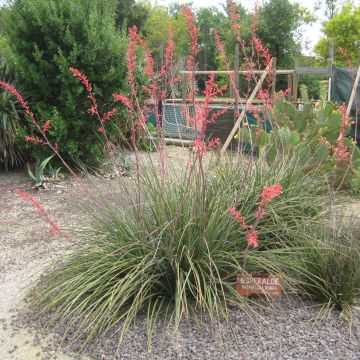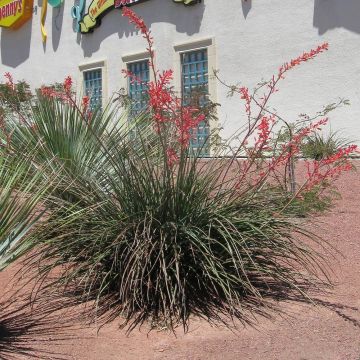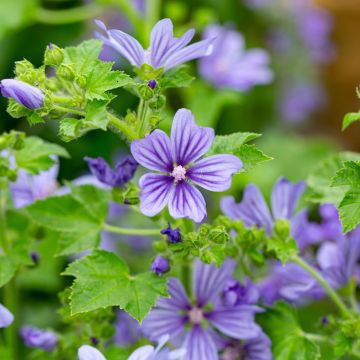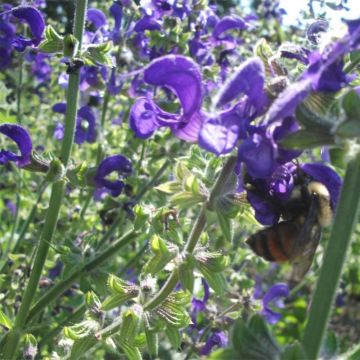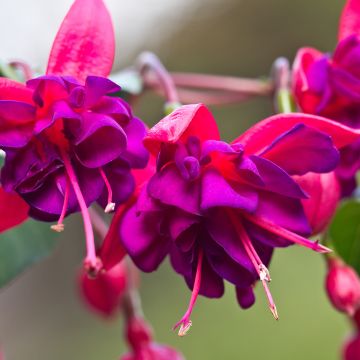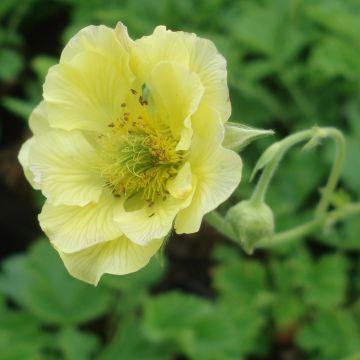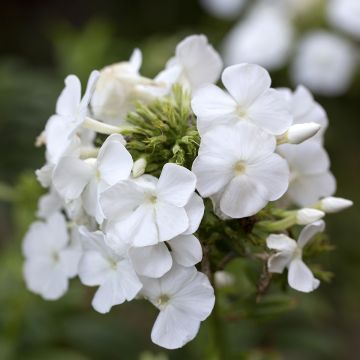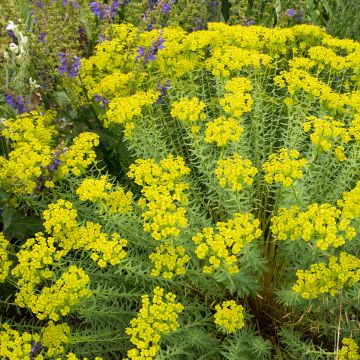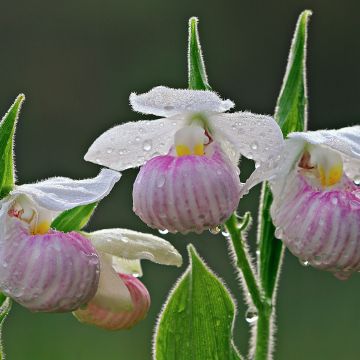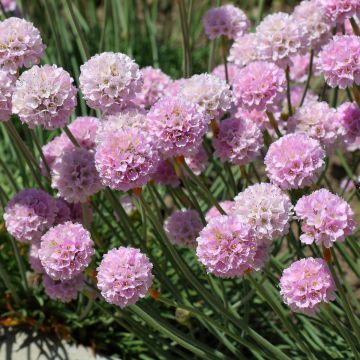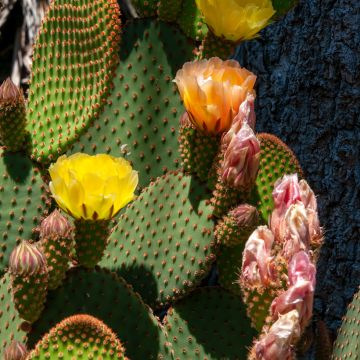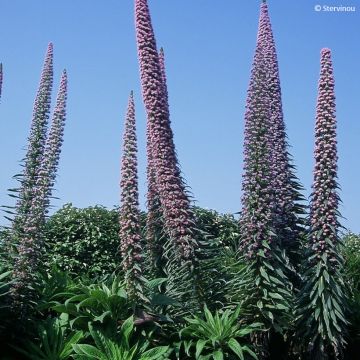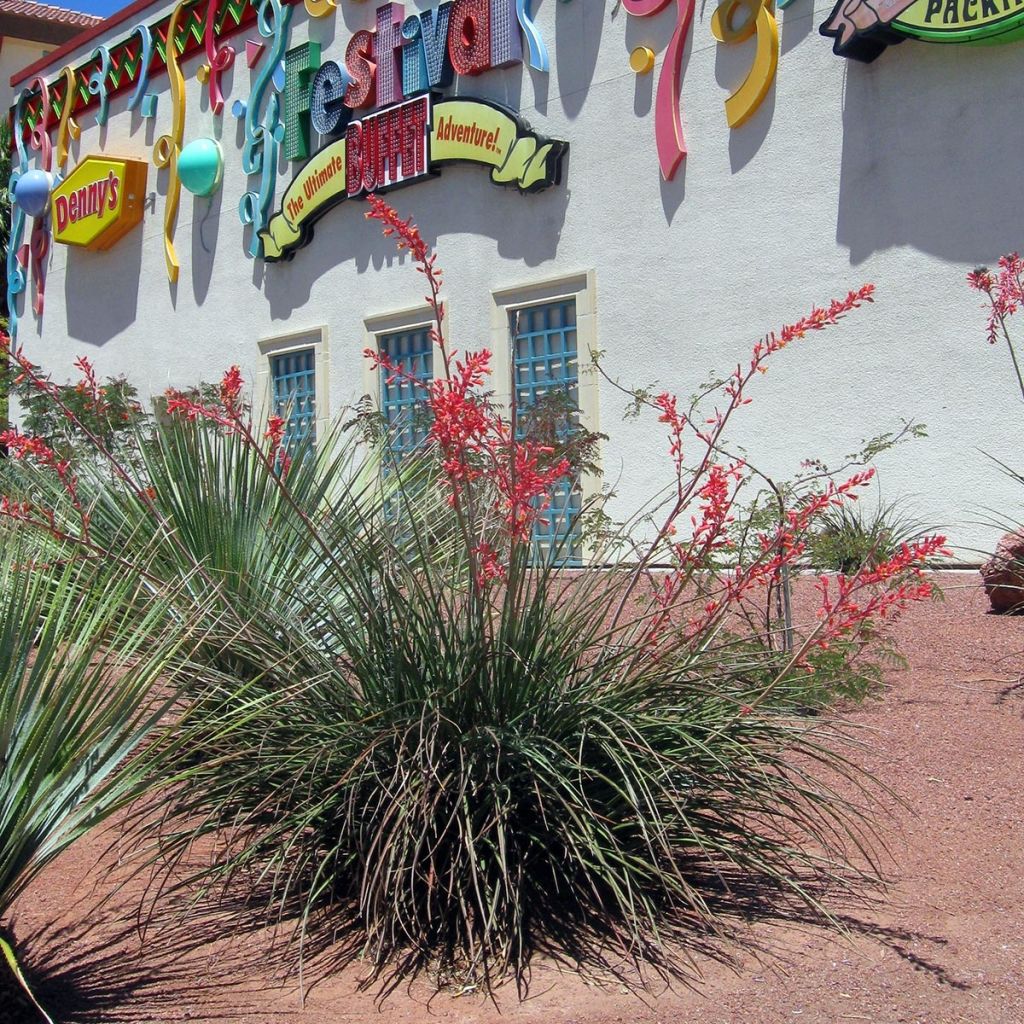

Hesperaloe parviflora - Red Yucca
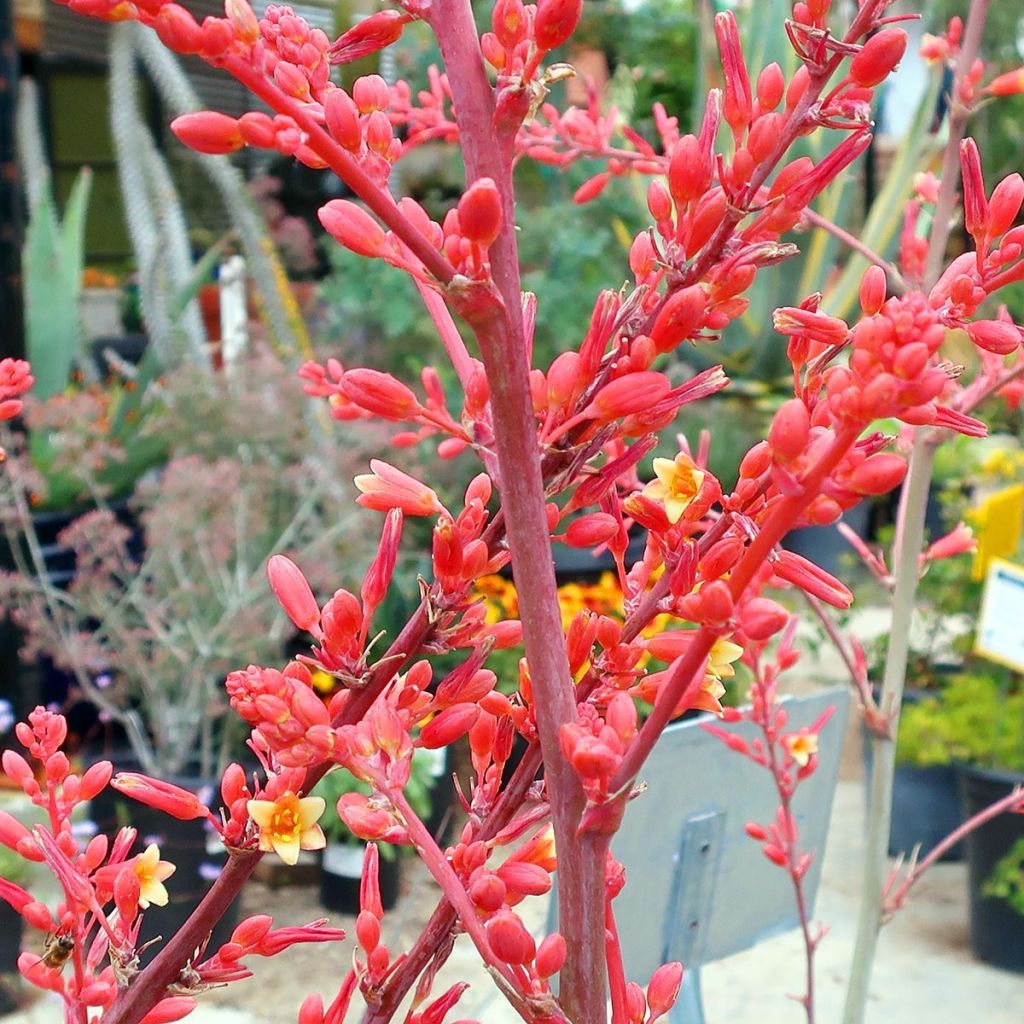

Hesperaloe parviflora - Red Yucca
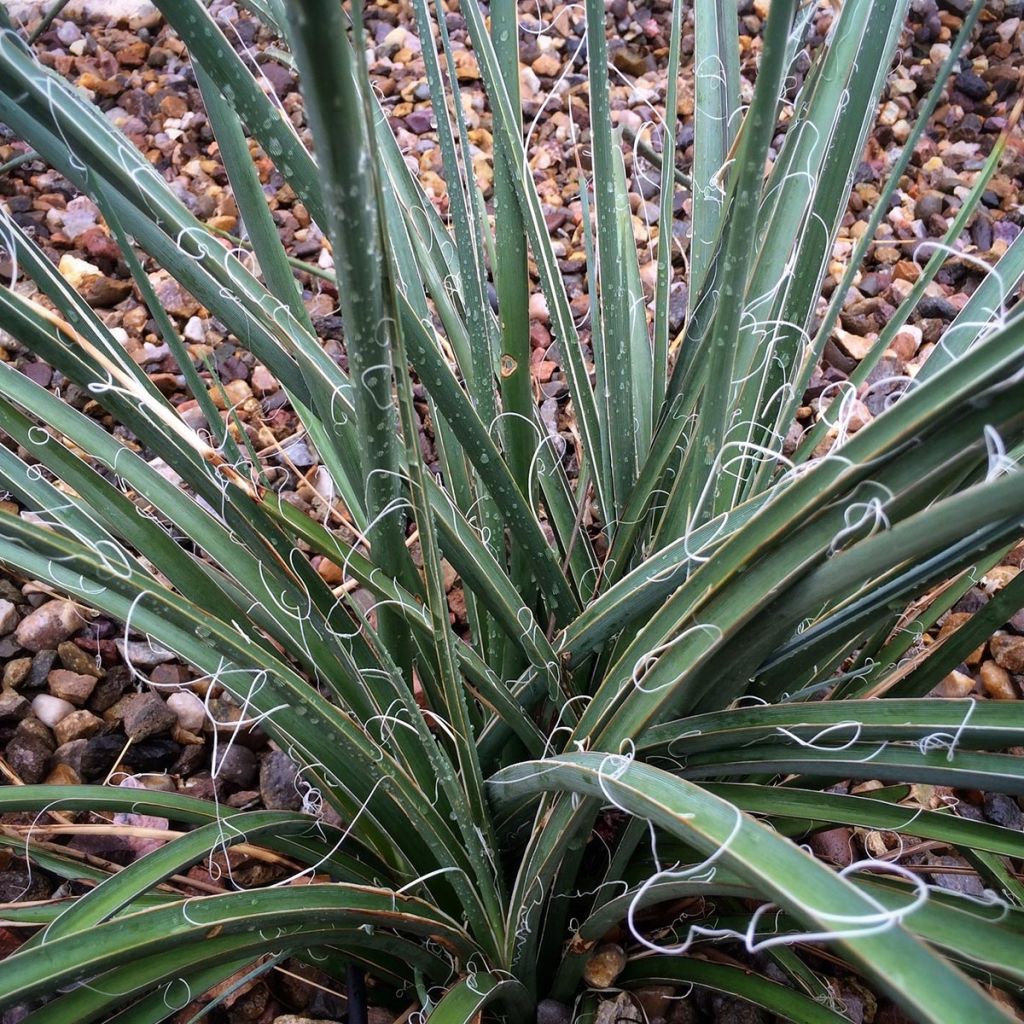

Hesperaloe parviflora - Red Yucca
Hesperaloe parviflora - Red Yucca
Hesperaloe parviflora
Red yucca, Hummingbird yucca
Plant arrived in perfect condition and looking very beautiful. Quick delivery and perfect packaging. Thank you to your team.
Christine, 26/09/2023
This item cannot be shipped to the selected country
Delivery charge from €5.90
More information
Schedule delivery date,
and select date in basket
This plant carries a 12 months recovery warranty
More information
We guarantee the quality of our plants for a full growing cycle, and will replace at our expense any plant that fails to recover under normal climatic and planting conditions.
From €5.90 for pickup delivery and €6.90 for home delivery
Express home delivery from €8.90.

Does this plant fit my garden?
Set up your Plantfit profile →
Description
Hesperaloe parviflora is sometimes called Red Yucca due to its relationship with yuccas and its dazzling flowering. It is an excellent plant for dry or even arid soil, capable of withstanding both water scarcity and cold, and one of the most beautiful representatives of the agave family. Less imposing than large agaves, this perennial develops in a rosette of tough, thin leaves, a bit austere, but surpasses its close relatives the yuccas with the delicacy and liveliness of its summer flowering, in a bright salmon red. In New Mexico and Arizona, this species is commonly planted as ground cover by landscape professionals who use it to replace grass on roundabouts and medians, for its exemplary drought resistance. The Red Yucca, easy to acclimatise in many regions, is one of the few plants capable of flowering in the summer in hot regions (such as the Mediterranean) where many plants suffer in heat and drought and which can often be dull at this time of year.
Hesperaloe parviflora is native to the Chihuahuan Desert, spanning Texas and Mexico, and up into the mountains of Texas - which regularly experience freezing temperatures and snowfall in winter, and arid summers. It is a perennial plant adapted to very harsh climatic conditions. Both elegant and generous, the red yucca seems unaffected by its environment. This perennial succulent has rhizomes capable of producing suckers, but it is devoid of aerial stems. It forms a basal rosette, 40 to 60 cm (15 to 24 in) tall and at least 1 m (3 ft) wide, spreading laterally over the years to eventually form a thick ground cover. The leaves are evergreen in winter. They are narrow, pointed, linear, and rigid, gutter-shaped, with sharp tips and twisted filaments along their edges. Spectacular flowering occurs from June to August-September. A branched floral stem, 1.20m (4 ft) tall, slightly arched at the ends, emerges from each rosette. It bears numerous small tubular and trailing flowers in a beautiful shade of salmon red to coral along its branches. These honey- and nectar-rich blooms attract many pollinators. After pollination, a few globose fruits form, opening at maturity to release tightly packed black seeds. The plant is hardy down to -15°C (5°F) in well-drained soil, even lower in dry soil during winter.
Hesperaloe parviflora is a boon for dry, rocky, or sandy gardens where soil is scarce. It is ideal for creating large flowering borders all summer long, for structuring a large rockery or an exotic bed, or for brilliantly filling an unrewarding area of the garden. It can be planted as a solitary specimen over ground cover plants (e.g. Teucrium, Thyme, Sedum, Sempervivum) or associated on a dry slope with small shrubs for dry soil (Hertia cheirifolia, Hypericum olympicum), light grasses (Stipa tenuissima or barbata), lavenders, and rosemary. Highly floriferous plants like Gaura, Nepeta Six Hills Giant, or the indestructible Erigeron karvinskianus will accompany its flowering throughout the summer. Easily create a very colourful scene in summer by combining it with the Amorpha canescens, with its blue-violet flowers, or with trailing sedums, Caryopteris, or Afghan salvias.
Report an error about the product description
Hesperaloe parviflora - Red Yucca in pictures
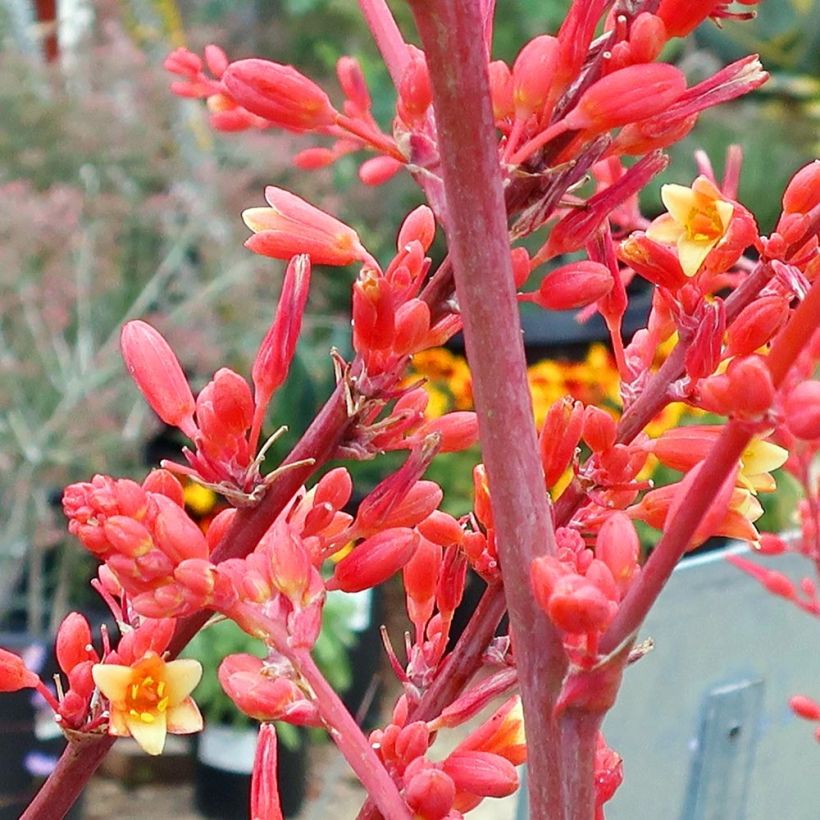

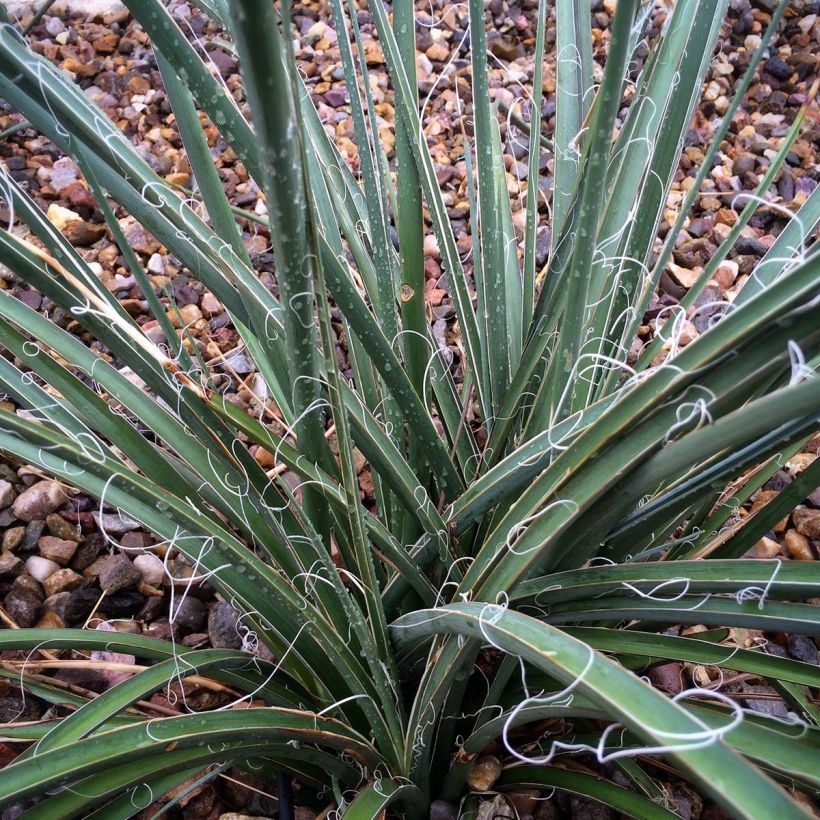

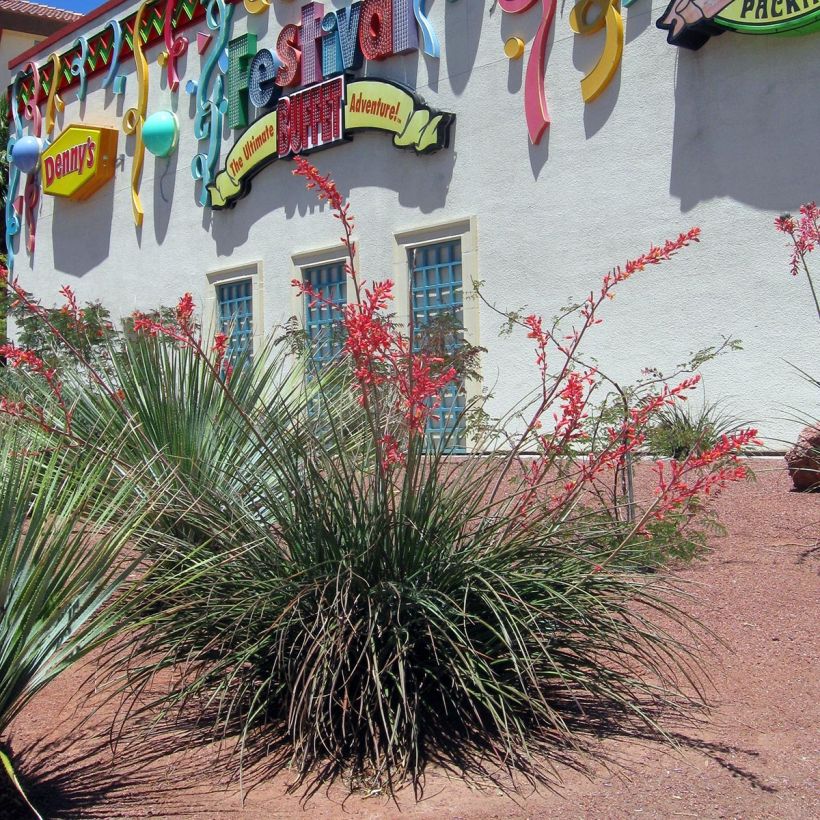

Flowering
Foliage
Plant habit
Botanical data
Hesperaloe
parviflora
Agavaceae
Red yucca, Hummingbird yucca
North America
Other Hesperaloe - Yucca rouge
Planting and care
Install Hesperaloe parviflora in full sun, in ordinary soil that is not too heavy, even poor, stony, slightly acidic or alkaline, sandy, but well-drained to increase its hardiness: If your soil tends to be clayey, lighten it as much as possible by planting on a mound or a raised border, 20-30 cm (8-12 in) above the ground, enriched with coarse sand and gravel. It tolerates winter moisture and cold quite well, and perfectly tolerates dry soils in summer, and arid situations. It will withstand significant but short-lived frosts, down to about -15°C (5 °F). Snow is not a problem in well-drained and rocky soil.
This plant has no enemies in European climates and requires very little maintenance: simply remove faded flower spikes.
Propagation by sowing fresh seeds in autumn.
Planting period
Intended location
Care
-
, onOrder confirmed
Reply from on Promesse de fleurs
Summer flowering perennials
Haven't found what you were looking for?
Hardiness is the lowest winter temperature a plant can endure without suffering serious damage or even dying. However, hardiness is affected by location (a sheltered area, such as a patio), protection (winter cover) and soil type (hardiness is improved by well-drained soil).

Photo Sharing Terms & Conditions
In order to encourage gardeners to interact and share their experiences, Promesse de fleurs offers various media enabling content to be uploaded onto its Site - in particular via the ‘Photo sharing’ module.
The User agrees to refrain from:
- Posting any content that is illegal, prejudicial, insulting, racist, inciteful to hatred, revisionist, contrary to public decency, that infringes on privacy or on the privacy rights of third parties, in particular the publicity rights of persons and goods, intellectual property rights, or the right to privacy.
- Submitting content on behalf of a third party;
- Impersonate the identity of a third party and/or publish any personal information about a third party;
In general, the User undertakes to refrain from any unethical behaviour.
All Content (in particular text, comments, files, images, photos, videos, creative works, etc.), which may be subject to property or intellectual property rights, image or other private rights, shall remain the property of the User, subject to the limited rights granted by the terms of the licence granted by Promesse de fleurs as stated below. Users are at liberty to publish or not to publish such Content on the Site, notably via the ‘Photo Sharing’ facility, and accept that this Content shall be made public and freely accessible, notably on the Internet.
Users further acknowledge, undertake to have ,and guarantee that they hold all necessary rights and permissions to publish such material on the Site, in particular with regard to the legislation in force pertaining to any privacy, property, intellectual property, image, or contractual rights, or rights of any other nature. By publishing such Content on the Site, Users acknowledge accepting full liability as publishers of the Content within the meaning of the law, and grant Promesse de fleurs, free of charge, an inclusive, worldwide licence for the said Content for the entire duration of its publication, including all reproduction, representation, up/downloading, displaying, performing, transmission, and storage rights.
Users also grant permission for their name to be linked to the Content and accept that this link may not always be made available.
By engaging in posting material, Users consent to their Content becoming automatically accessible on the Internet, in particular on other sites and/or blogs and/or web pages of the Promesse de fleurs site, including in particular social pages and the Promesse de fleurs catalogue.
Users may secure the removal of entrusted content free of charge by issuing a simple request via our contact form.
The flowering period indicated on our website applies to countries and regions located in USDA zone 8 (France, the United Kingdom, Ireland, the Netherlands, etc.)
It will vary according to where you live:
- In zones 9 to 10 (Italy, Spain, Greece, etc.), flowering will occur about 2 to 4 weeks earlier.
- In zones 6 to 7 (Germany, Poland, Slovenia, and lower mountainous regions), flowering will be delayed by 2 to 3 weeks.
- In zone 5 (Central Europe, Scandinavia), blooming will be delayed by 3 to 5 weeks.
In temperate climates, pruning of spring-flowering shrubs (forsythia, spireas, etc.) should be done just after flowering.
Pruning of summer-flowering shrubs (Indian Lilac, Perovskia, etc.) can be done in winter or spring.
In cold regions as well as with frost-sensitive plants, avoid pruning too early when severe frosts may still occur.
The planting period indicated on our website applies to countries and regions located in USDA zone 8 (France, United Kingdom, Ireland, Netherlands).
It will vary according to where you live:
- In Mediterranean zones (Marseille, Madrid, Milan, etc.), autumn and winter are the best planting periods.
- In continental zones (Strasbourg, Munich, Vienna, etc.), delay planting by 2 to 3 weeks in spring and bring it forward by 2 to 4 weeks in autumn.
- In mountainous regions (the Alps, Pyrenees, Carpathians, etc.), it is best to plant in late spring (May-June) or late summer (August-September).
The harvesting period indicated on our website applies to countries and regions in USDA zone 8 (France, England, Ireland, the Netherlands).
In colder areas (Scandinavia, Poland, Austria...) fruit and vegetable harvests are likely to be delayed by 3-4 weeks.
In warmer areas (Italy, Spain, Greece, etc.), harvesting will probably take place earlier, depending on weather conditions.
The sowing periods indicated on our website apply to countries and regions within USDA Zone 8 (France, UK, Ireland, Netherlands).
In colder areas (Scandinavia, Poland, Austria...), delay any outdoor sowing by 3-4 weeks, or sow under glass.
In warmer climes (Italy, Spain, Greece, etc.), bring outdoor sowing forward by a few weeks.

































